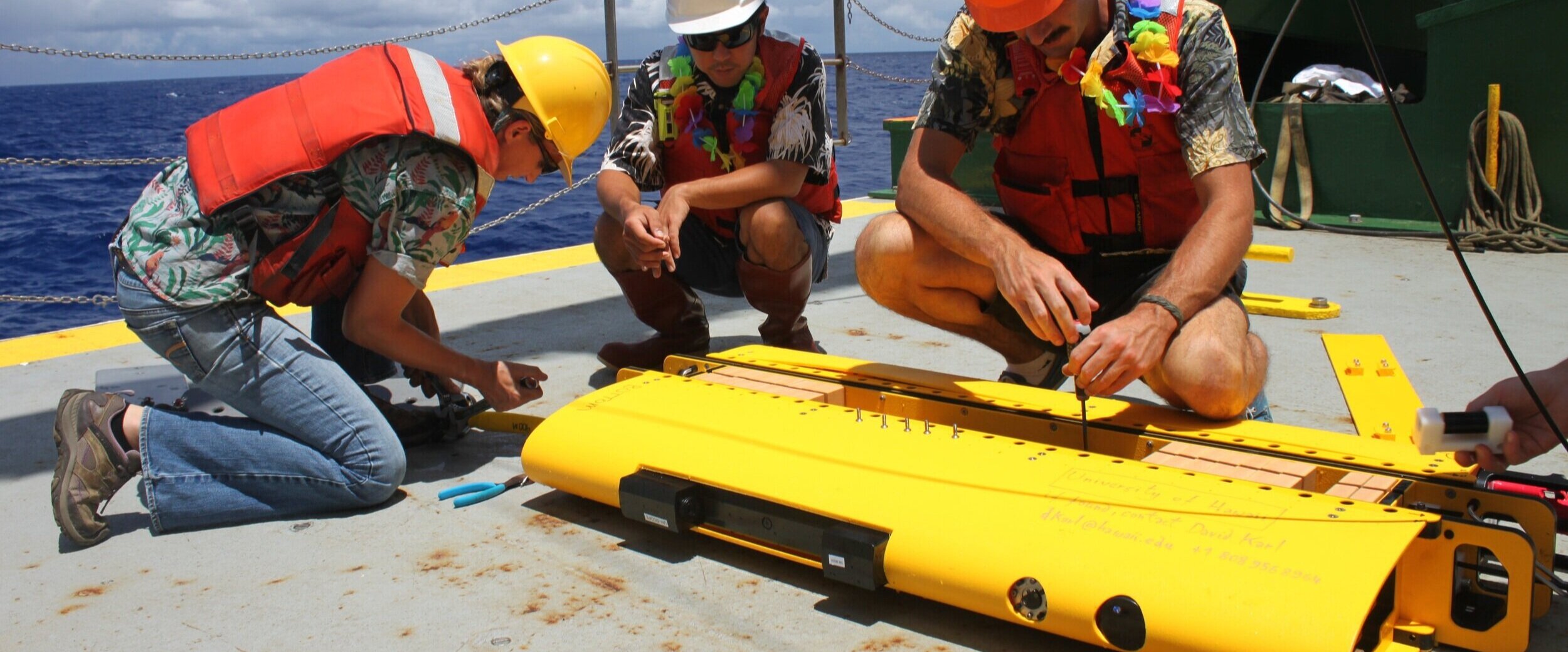HARMFUL ALGAL BLOOMS
HARMFUL ALGAL BLOOMS
PAYLOAD:
RBRconcerto CTD
Seabird Scientific ECO Triplet (ChlA and Optical Backscatter)
Seabird OCR-504 (Irradiance)
Seabird SUNA V2 (Nitrate)
INSTITUTION:
Scripps Institution of Oceanography &
Woods Hole Oceanographic Institution
DEPLOYMENT LOCATION:
San Diego, CA
SCIENTIFIC SUMMARY:
Extremely dense harmful algal blooms (HABs) are an increasing problem globally. How microscopic, single-celled organisms can reach such high abundances is still poorly understood. Over 50 y ago, it was postulated that motile dinoflagellates could form dense blooms through their vertical swimming, which gave them a competitive advantage over other phytoplankton.
During a dense bloom in 2020, this hypothesis was tested using a well instrumented Wirewalker. The Wirewalker payload consisted of an integrated suite of sensors to simultaneously measure in situ nitrate, multispectral irradiance, bio-optical water properties and hydrographic properties. The WW mooring yielded full-depth (100 m) profiles of light, nitrate concentration, Chl-a fluorescence, optical backscatter, temperature, salinity, and density at 1-m vertical resolution every 15 min for a period of 2 wk (as determined by the sampling rate of the SUNA, 1s, and vertical profiling speed of the Wirewalker).
It was confirmed that motile dinoflagellates swam downward at night into the deep nutrient pool, and upward during the day to photosynthesize. Decreases of nutrients in deep waters were proportional to increases in organism abundance, directly linking organism behavioral and metabolic activities. These observations demonstrate that vertical migration is central to the formation of exceptionally dense dinoflagellate HABs.
REFERENCE:
Bofu Zheng, Andrew J. Lucas, Peter J. S. Franks, Tamara L. Schlosser, Clarissa R. Anderson, Uwe Send, Kristen Davis, Andrew D. Barton, and Heidi M. Sosik. 2023. Dinoflagellate vertical migration fuels an intense red tide. Proceedings of the National Academy of Sciences (PNAS), Vol. 120, No. 36. https://doi.org/10.1073/pnas.2304590120













